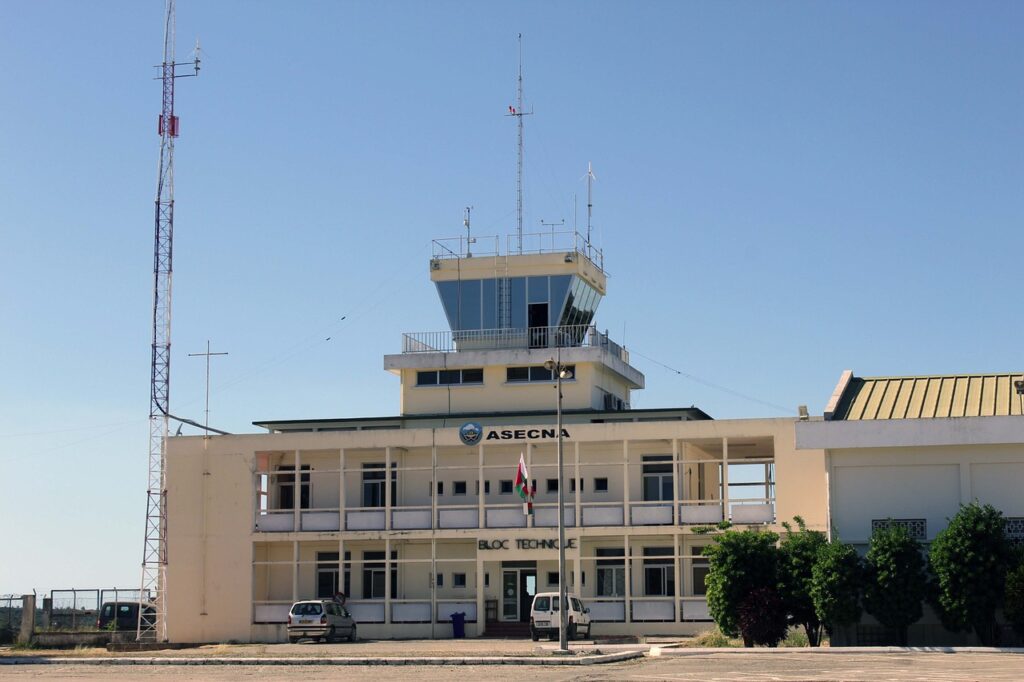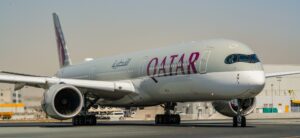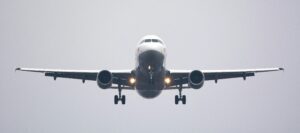At the outset, I must confess that I am not personally an air traffic controller. Nonetheless, my academic background includes studies in air traffic management at three distinct universities in the UK. I have delved into numerous textbooks on air traffic control and have watched a countless of videos on the subject.
Additionally, I have had the opportunity to visit several airport control towers, including those in Mogadishu and Hargeisa. Therefore, I believe I am well-equipped to discuss air traffic management authoritatively.
Air traffic controllers (ATCs) play a pivotal role as the vigilant overseers of our skies, ensuring the safe and orderly movement of air traffic across the globe. These professionals are tasked with the day-to-day management of myriad aircraft, ranging from small private jets to large international airliners, facilitating seamless transitions from take-off to touchdown.

This guide is designed to detail the process of becoming an air traffic controller—a vital position in the aviation industry that demands specialized skills, extensive training, and a profound dedication. For those aspiring to a challenging and fulfilling career in aviation, this guide will furnish you with the essential knowledge needed to embark on a career as an ATC, upholding safety and efficiency within the worldwide air traffic network.
Table of Contents
Overview of Air Traffic Management System
The Air Traffic Management (ATM) System is crucial for ensuring the safe and efficient handling of air traffic worldwide. It encompasses a network of services, technologies, and procedures designed to manage the full spectrum of aircraft movements, from take-off to landing.
This comprehensive system includes air traffic control (ATC), which directly supervises the movement of aircraft on the ground and in the air. Additionally, it includes Aeronautical Information Services (AIS) along with other elements such as airspace management, traffic flow management, and communication, navigation, and surveillance systems (CNS).
Why is air traffic control (ATC) necessary?
Air traffic control is crucial for ensuring the safety, efficiency, and orderly management of global airspace.
Here’s why it’s necessary:
Safety:
ATC’s main function is to prevent collisions by managing aircraft spacing both in the air and on the ground. ATC manage airplane traffic on taxiways, approach and area control, provide critical flight information, and offer emergency support.
Efficiency
By directing aircraft movements and optimizing routes, ATC minimizes delays and maximizes airspace and airport usage, enhancing the aviation sector’s efficiency.
Order and Structure
Given the volume of global air traffic, without ATC, airspace could become chaotic. ATC enforce rules and procedures, maintaining order and ensuring safe, simultaneous flight operations.
Communication and Information
ATC provide essential, real-time information to pilots about changes in runway status, weather conditions, and potential hazards, aiding in decision-making during flights.
Support for All Types of Flights
ATC caters to diverse aviation stakeholders—including commercial airlines, private pilots, and military operations—coordinating their varied needs to ensure a safe airspace environment.
International and Domestic Coordination
ATC is pivotal in maintaining consistent global aviation safety standards and facilitating smooth transitions between different national and block airspaces.
Economic Benefits
Efficient air traffic control is economically beneficial, optimizing flight schedules, reducing delays, and enabling airports to handle more traffic, thus boosting revenue.
Why someone would want to work as an air traffic control
Working as an air traffic controller (ATC) can be a highly rewarding choice for those interested in aviation and who excel in high-pressure environments.
Here’s why someone might choose this career:
1. Challenging Work: Being an ATC is one of the most demanding jobs in aviation, requiring quick thinking and the ability to make decisions under pressure. It’s ideal for those who thrive in intense, fast-paced environments.
2. Professional Growth: Air traffic controllers receive continuous training to stay updated with the latest technologies and changing regulations. This commitment to lifelong learning keeps them at the forefront of their field.
3. Competitive Salary and Benefits: ATCs often enjoy good salaries and benefits like health insurance, retirement plans, and paid time off, which reflect the high level of responsibility and skill the job demands.
4. Unique Environment: Air traffic controllers work in high-tech settings and control towers at the core of aviation operations, offering an exhilarating atmosphere for aviation enthusiasts.
5. Flexible Schedules: Unlike typical 9-to-5 jobs, shift work as an ATC provides flexibility and longer periods off, allowing for a better work-life balance and more personal time.
6. Global Opportunities: Skills as an air traffic controller are needed worldwide, offering chances to work abroad, experience different cultures, and broaden professional horizons.
7. Job Security: The consistent need for skilled ATCs provides stability in job security, making it a reliable career choice.
Understanding the Role of Air Traffic Controllers
Air Traffic Control (ATC) is essential for the safety and efficiency of air travel, orchestrating the movement of airplanes both on the ground and in the air.
ATC is directly responsible for the safe, orderly, and expeditious flow of air traffic. This involves controlling aircraft movements on the ground and in the air, using radar, other tracking technologies, and visual references to ensure that aircraft keep safe distances from each other. ATC is subdivided into various sectors, including Tower Control, Ground Control, Approach and Departure Control, and En-route or Area Control, each handling different stages of flight from taxiing to cruising altitude.

Types of Air Traffic Control
Aerodrome Control: Guardians of the Tarmac
Aerodrome controllers, often referred to as tower controllers, play a crucial role as the primary overseers of all airport surface operations. This includes the management of take-offs, landings, and all types of ground traffic—vehicles, service equipment, and aircraft taxiing to and from runways and gates. Positioned within the control tower, aerodrome controllers maintain a visual overview of the airport, supplemented by radar and other electronic aids to ensure even in poor visibility conditions, their control remains precise and effective.
Their responsibilities extend beyond just directing planes. They must coordinate the sequence of aircraft departures and arrivals, manage runway traffic, and ensure that all ground movements do not intersect or interfere with each other. This role requires a high level of alertness and quick decision-making to maintain safety and efficiency, especially in airports with high traffic volumes.
Did you know? Aerodrome controllers often manage multiple runways and taxiways simultaneously, requiring them to visualize a complex dance of aircraft and ground vehicles to prevent any conflicts.
Approach Control: Precision in Coordination
Approach controllers are tactical experts who manage the critical transition of aircraft from cruising altitudes to preparing for landing, or from take-off to their path out of airport airspace. Their primary task is to sequence inbound and outbound flights efficiently while maintaining safe distances between them.
As aircraft enter the terminal area, approach controllers guide pilots in altering their route, speed, and altitude to set up a safe and orderly approach to the runway.
For departing flights, they provide instructions to integrate them into the larger pattern of air traffic, handing them off to area control once they exit the terminal airspace.
This role demands exceptional skill in managing multiple flights simultaneously and a thorough understanding of flight patterns and behaviours.
Area Control: Masters of the Skyways
Area control, or en-route control, involves managing aircraft travel through large sections of airspace at cruising altitudes. Area controllers operate from centralized control centers equipped with sophisticated radar and communication equipment to cover extensive regions—sometimes spanning entire states or countries. Their task is to ensure that all aircraft within their assigned airspace maintain safe distances from one another, follow their filed flight plans, and receive timely information about weather and other critical factors.
Area controllers are strategists, continually assessing and adjusting the paths of multiple aircraft to maximize efficiency and safety. They provide navigational assistance, authorize altitude changes, and reroute aircraft around congested areas or adverse weather conditions. The complexity of their work increases with the volume of traffic and the size of the airspace they monitor.
Did you know? Area controllers often handle flights at altitudes where small errors can have significant repercussions, requiring them to be meticulous in every command they issue.
Essential Skills for Air Traffic Controllers
Becoming an air traffic controller (ATC) requires a specific set of technical and soft skills to handle the demanding responsibilities of the job effectively.
Here’s a concise summary of the essential skills needed to become an air traffic controller:
1. Radar and Navigation Proficiency: Mastery of radar systems and navigational aids is crucial for tracking and directing aircraft effectively.
2. Attention to Detail: Precision in reading instruments and managing multiple information streams is essential to prevent problems.
3. Data Interpretation and Analysis: Quick and accurate analysis of flight data is necessary for making decisions on aircraft routing and safety.
4. Communication Skills: Clear and effective communication with pilots, other controllers, and airport personnel is critical for safe and efficient operations.
5. Decision-Making Ability: The capability to make fast, informed decisions in high-pressure situations is vital for safety.
6. Stress Management: Managing stress effectively is crucial to maintain clear-headed decision-making throughout shifts.
7. Problem-Solving Skills: Quick identification and resolution of issues, such as equipment failures or emergencies, are necessary.
8. Teamwork: Effective collaboration and support among team members ensure a safe environment.
9. Adaptability and Flexibility: Being flexible and adaptable to sudden changes or new information is important in air traffic control.
10. Conflict Resolution: Resolving conflicts, whether regarding flight paths or communications, is key to maintaining orderly airspace.
11. Alertness and Vigilance: Sustained attention and vigilance are required to monitor and manage airspace effectively.
12. Understanding of ATC Systems and Protocols: Proficiency in specific air traffic control systems, communication procedures, and standard operating protocols is fundamental.

Qualifications and Training for Air Traffic Controllers
To become an air traffic controller (ATC), one must fulfill specific educational and training requirements:
High or secondary School is a mandatory in order to become an air traffic controller. However, a degree in aviation or a related field can be helpful but isn’t required everywhere.
Initial Training which covers air traffic control basics, equipment use, and emergency procedures are required in most countries.
On-the-Job Training (OJT): Practical application under experienced supervision.
Certification: Necessary exams to validate skills with ongoing assessments for qualification maintenance.
Age, Health and security check requirements:
The minimum age is 18 years and the mandatory retirement age varies between 55 60 years in the US and Europe.
A good vision (20/20) and hearing is required; must pass physical and psychological exams to ensure capability in high-stress scenarios.
In addition, due to the sensitive nature of the job, the candidate must undergo a security check and must be cleared.
These standards ensure ATCs are equipped to handle the rigorous demands of their roles, keeping air travel safe and efficient.
Some of the leading Schools and Training centres in the world (Alphabetical order)
Civil Aviation Academy of Singapore (CAAS), Singapore
École Nationale de l’Aviation Civile (ENAC), Toulouse, France
Federal Aviation Administration (FAA), Oklahoma, USA.
National Air Traffic Services (NATS), Whiteley, United Kingdom
Turkish Aviation Academy, Istanbul Turkey
https://akademi.thy.com/home.aspx
Conclusion
Becoming an air traffic controller (ATC) involves taking on a challenging yet rewarding role that is crucial for maintaining the safety and orderliness of global air travel.
ATCs are responsible for directing aircraft safely and efficiently, managing multiple aircraft simultaneously, and ensuring they maintain safe distances from each other. This demanding role requires excellent communication skills, quick decision-making abilities, and a thorough understanding of aviation regulations and procedures.
The training for ATCs is rigorous, encompassing both theoretical knowledge and practical simulations to prepare controllers for the high-pressure environment they will encounter in real-world scenarios.
The position demands a combination of skills, training, and determination, offering a fulfilling career for those passionate about aviation. ATCs must stay calm under pressure, possess strong problem-solving skills, and have the ability to think critically and adapt quickly to changing situations.
The career path includes extensive education and training, often starting with specialized courses at aviation academies, followed by on-the-job training at control centres and continuous professional development to keep up with technological advancements and regulatory changes.



